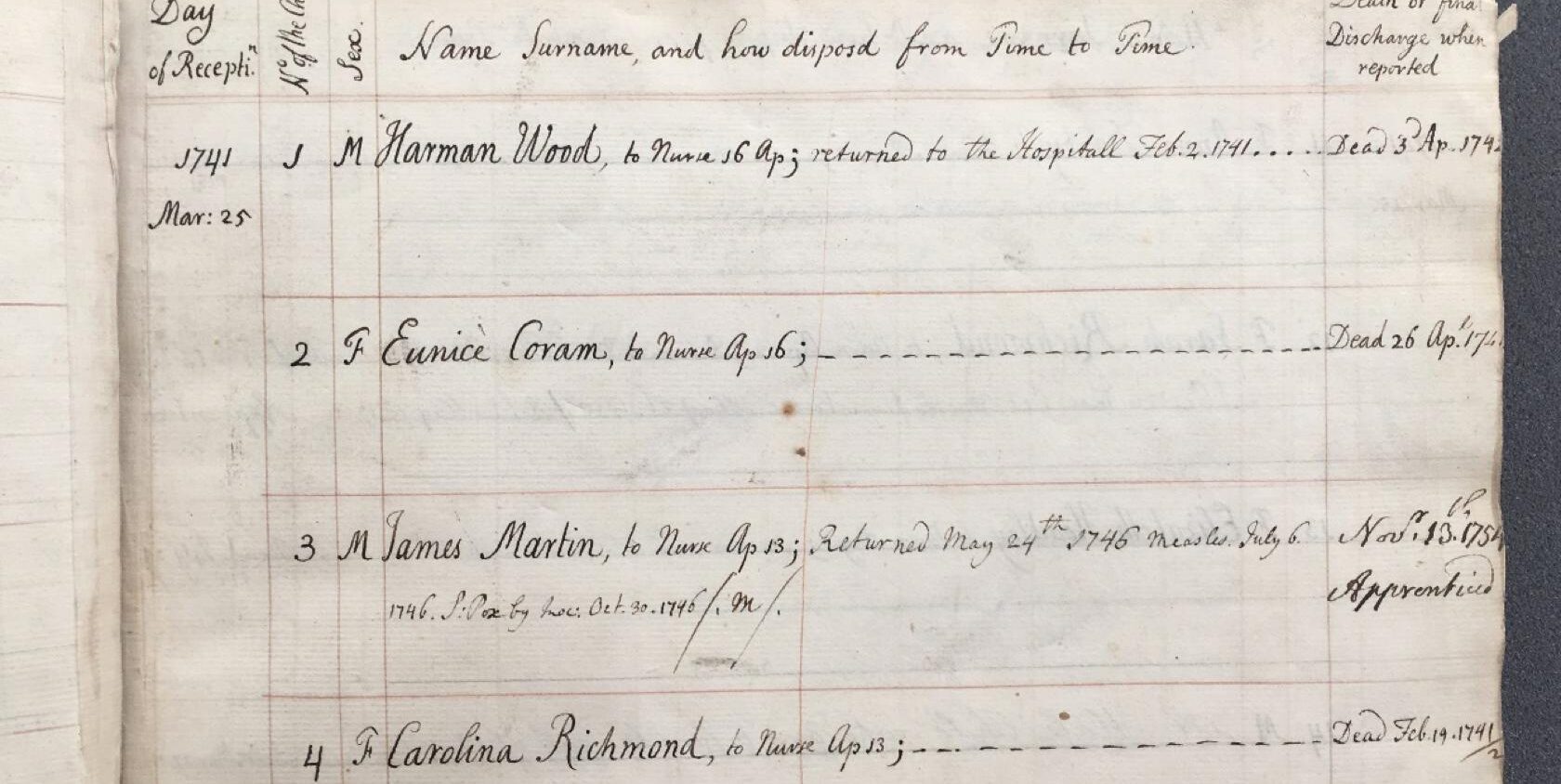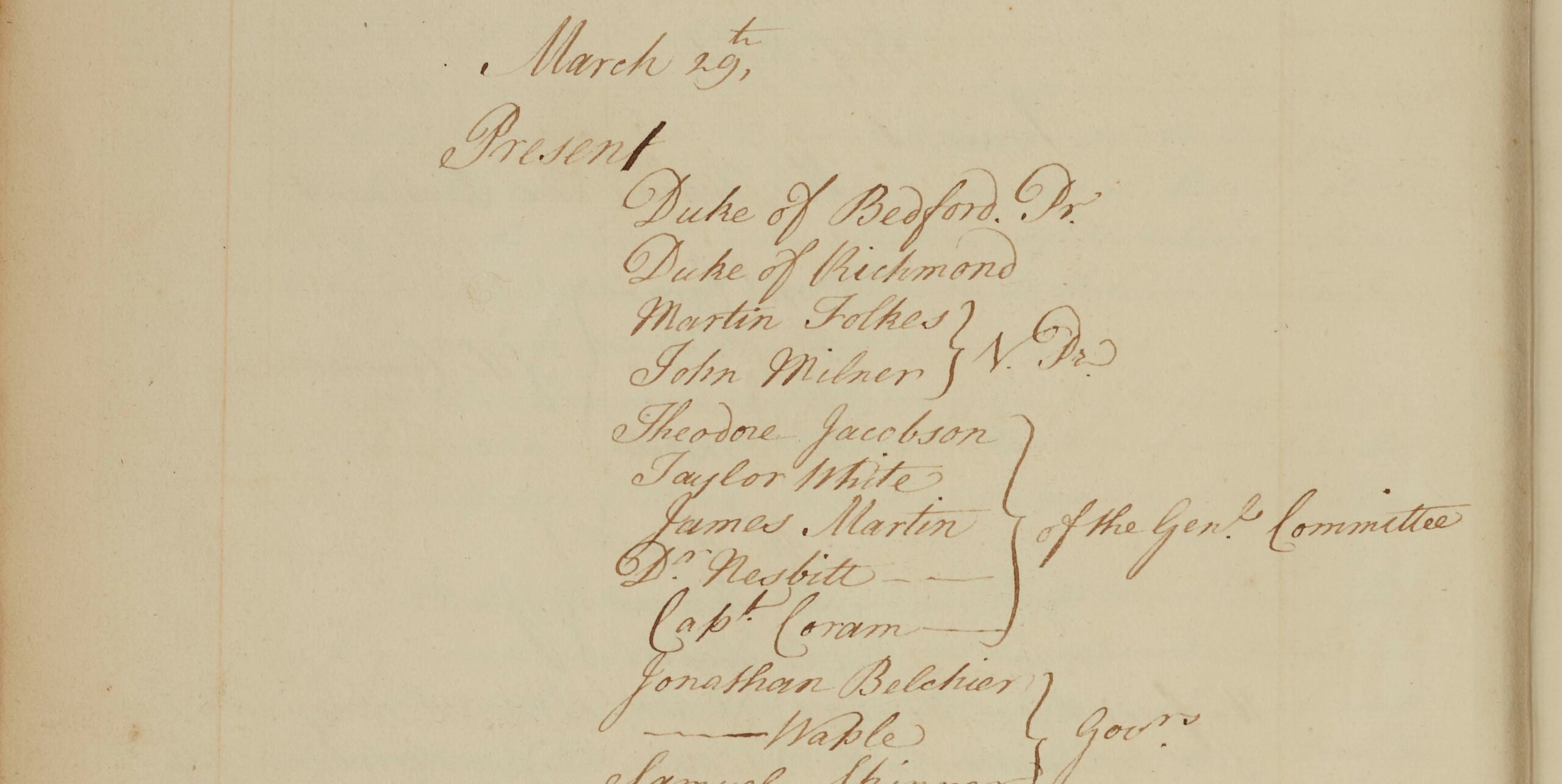When we started conservation work on the Foundling Hospital Archives, it was fitting that work started at the beginning – with the earliest General Register book.
The first entry is dated 25 March 1741. When children were taken in, they were given a number, baptised, and given a new name – and it is notable that the first female named in the book was Eunice Coram, the same name as Captain Thomas Coram’s beloved wife. You can see Eunice’s name in the first entries of the General Register below.
Coram has selected nearly 100 volumes to be conserved as part of Voices Through Time. These include registers of children taken in, baptisms, apprenticeships and records of children sent to London parishes and country hospitals as well as over 100 years of rough court minutes and sub-committee minutes all relating to the day to day running of the Foundling Hospital and its considerations of the wellbeing of the children.
Later work includes conservation of over 130 bundles of loose documents and letters – these are the petitions from caregivers to ask for admission to the hospital and those attempting to reclaim the children.
– Wanda Robins, Conservator

As Wanda mentions, upon being admitted into the care of the Foundling Hospital, the children were baptised and given new names by the Governors. The reasoning behind the name change, was that it was thought that it would help protect the anonymity of the birth mothers. At the time, there was huge stigma surrounding women who gave birth outside of marriage. By protecting their identity, the Governors believed that it allowed a greater chance for the women to continue on with their lives and avoid the stigma that might otherwise hold them back.
Initially, children were often given names of those associated with the running and supporting of the hospital. We’ve seen that Eunice Coram, who was admitted on the night the Foundling Hospital first opened, was named after the wife of Thomas Coram. Many of the other early names were those of the Dukes and Duchesses that were involved with the Foundling Hospital.
In the above General Register, we see that the fourth child to be admitted was named Carolina Richmond. A look at the Daily Minutes from four days later, on March 29th 1741, show that the Duke of Richmond was among those present at the christening and the naming of the children that had been admitted on the opening night. Those listed present were noted as having named the boys and a group of women, including the Duchess of Richmond, Lady Caroline Lenox, named the girls.

This early practice of supporters naming the children after themselves came to end. Inspiration was then often, but not exclusively, taken from famous names from history, geographical names, plants, birds, or other features of the natural world.
Many former Foundling Hospital pupils later reflected that the practice of giving children a new name contributed to the feeling that the traces of their former lives had been erased, but the meticulous records that were kept over hundreds of years continue to help many former pupils and their descendants uncover their ‘hidden’ family histories and, in some cases, have seen children and their birth mothers re-united.
– Jo Blyghton, Coram Archivist
Want to be a part of Coram’s fascinating work to uncover and understand more about our history? Become a transcriber or find out more about the online transcription project.

